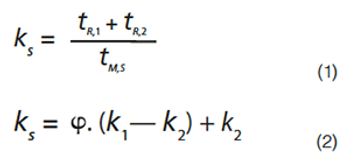
LCGC Europe
Click the title above to open the LCGC Europe July 2018 regular issue in an interactive PDF format.

LCGC Europe
Click the title above to open the LCGC Europe July 2018 regular issue in an interactive PDF format.

LCGC Europe
Several new materials and columns have been introduced in recent years for reversed-phase separations of proteins. How do I know which one to choose, and which separation conditions will be best for my protein separation?

LCGC Europe
This instalment describes ten corollaries in high performance liquid chromatography (HPLC) and pharmaceutical analysis that most practitioners are likely aware of but may overlook the rationales behind them.

LCGC Europe
Too often, analysts follow prescribed methods, including the processing of “blanks”, without fully understanding the rationale behind the various steps. This month we’ll look at the types of blanks used in an analytical procedure and why they are used. We will focus on those defined by U.S. regulatory agencies.

LCGC Europe
In this excerpt from LCGC Europe’s e-learning platform, CHROMacademy.com, the advantages of supported liquid extraction (SLE) are discussed.

LCGC Europe
The potential of TD SEC for in situ analyses of thermoreversibly bonded polymers is discussed. TD SEC allows the evolution of the polymer’s molar mass distribution to be monitored during temperature-sensitive bonding and debonding reactions. Through quantitative evaluation of the chromatograms, the reaction-influencing parameters can be studied, which is crucial for the effective development of novel functional materials. By using TD SEC, the effect of polymer size and flexibility on the debonding temperatures of DA polymers was confirmed, their debonding and bonding ability studied, and the de-crosslinking of thermoreversibly cross-linked DA polymers assessed. TD SEC offers a versatile platform for a broad variety of different polymer materials and to assess a variety of different analytical questions.

LCGC Europe
Comprehensive two-dimensional gas chromatography (GC×GC) offers significant improvement for volatile chemical separation. Selecting suitable first (1D) and second dimension (2D) columns normally requires consideration of the chemical composition of a sample. Replacing one of these dimensions with a two-column ensemble (for example, 1D1 + 1D2 for the 1D column), provided with a pressure tuning makeup gas between them, varies the relative retentions of compounds before the modulation step according to the junction pressure. This makes it possible to alter the apparent polarity of the 1D ensemble, and this alters peak positions in the 2D GC×GC space. This article presents an account of studies that suggest this offers potential for improved operation for a GC×GC laboratory.

LCGC Europe
SFC 2018, the 12th annual instalment in this series, will take place on 17–19 October 2018, in Strasbourg, France, at the Palace of Music and Congress.